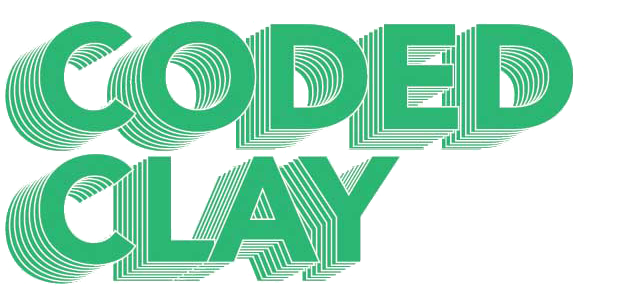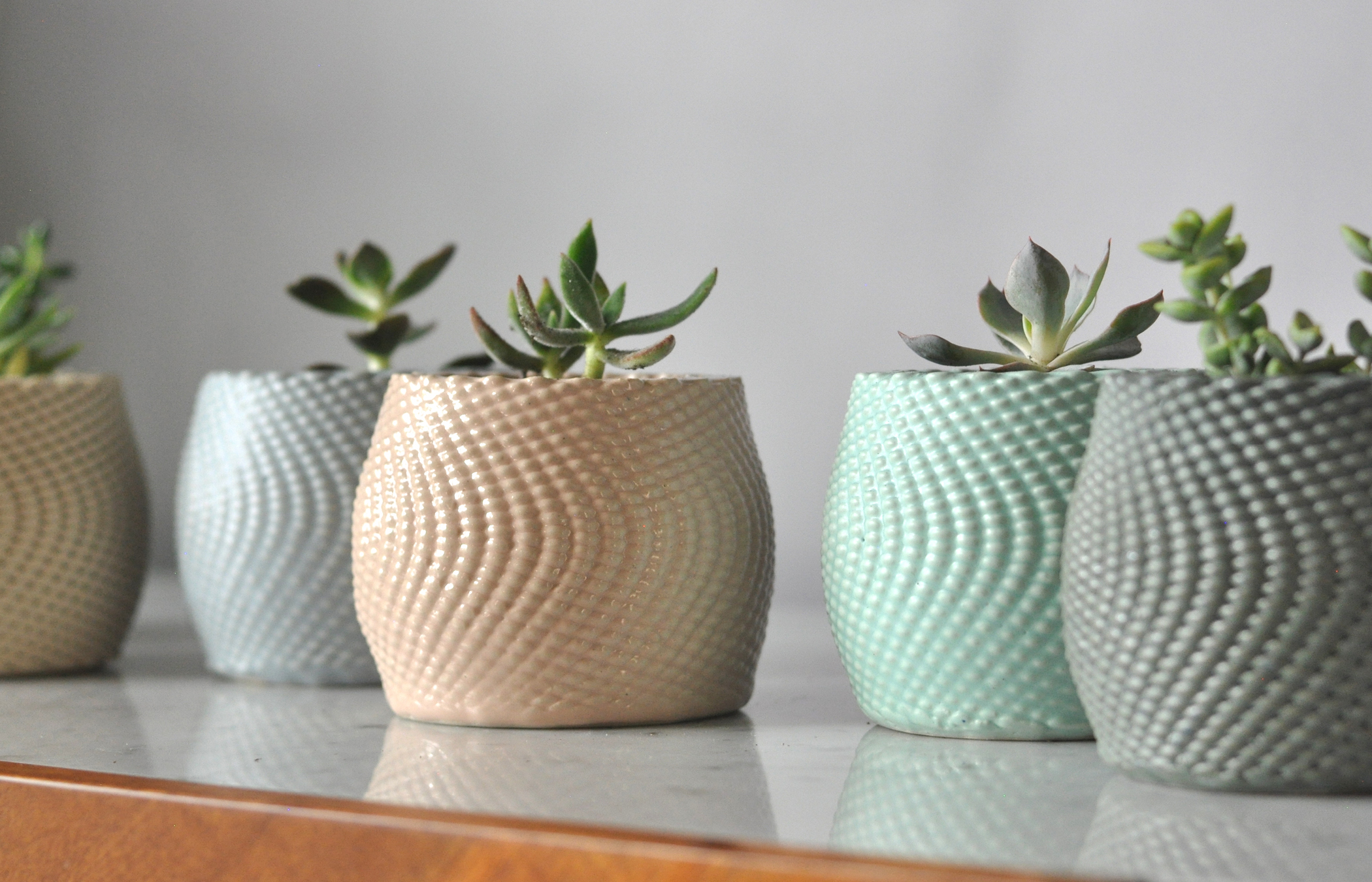Digitally designed and fabricated ceramic products.
Founded in 2018, Coded Clay is a Pittsburgh-based studio that blends tradition and innovation to create unique ceramic products and works of art.
Products
After two years of designing and countless rounds of prototyping, we perfected the fabrication technique, scaled up production, and are sharing our work with the world. Our products are divided into a series of collections that explore different aspects of the Coded Clay approach. Our first collection, Strata, focuses on a woven surface texture that can be created using this new fabrication technique (3D printing). Our second collection is only available at events.
Fabrication Process
Our forms are sketched and then modeled in a parametric design program that allows us to create complex and intricate designs. The products are then produced on custom-built 3D printers. While we approach the design and fabrication in a new way, once the products are made, we rely on the tools and skills traditionally used by ceramic artists. Each piece is refined by hand, fired, glazed by hand and fired again, which means that craftsmanship and artistry remain an integral part of each piece. They are not machine made, they are digitally crafted.
Material + Finishes
We use white stoneware clay for most of our work. All of our pieces are available raw (unglazed exterior) to better highlight our intricate and detailed textures through the interplay of light and shadow. The interior of vases are glazed to be watertight.
About the Founder
Coded Clay was born out of Brian Peters’ experience and interest in 3D printing with ceramics, which began during a ceramic residency in 2012 while he was living in the Netherlands. During that time, he launched Building Bytes, which 3D prints ceramic blocks and tiles for architectural installations. More recently, Brian has expanded his work with 3D printed ceramics, creating Coded Clay to offer homewares to a broader audience.
Brian is trained as an architect and his passion lies at the intersection of architecture, art, design and fabrication, and his focus is on 3D printing’s ability to seamlessly integrate these interests. His research in this field is widely publicized and has received several prestigious awards.

